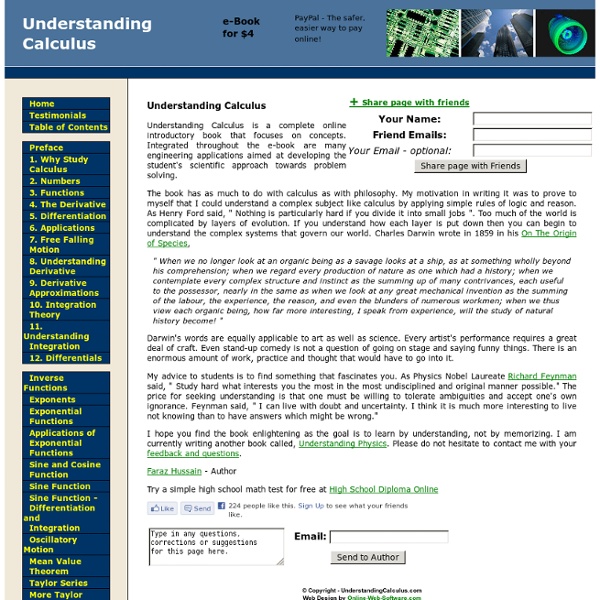



Dimensions Home A film for a wide audience! Nine chapters, two hours of maths, that take you gradually up to the fourth dimension. Mathematical vertigo guaranteed! Background information on every chapter: see "Details". Click on the image on the left to watch the trailer ! Free download and you can watch the films online! The film can also be ordered as a DVD. This film is being distributed under a Creative Commons license. Now with even more languages for the commentary and subtitles: Commentary in Arabic, English, French, German, Italian, Japanese, Spanish and Russian. Film produced by: Jos Leys (Graphics and animations) Étienne Ghys (Scenario and mathematics) Aurélien Alvarez (Realisation and post-production)
How to Read Mathematics This article is part of my new book Rediscovering Mathematics, now in paperback! How to Read Mathematics by Shai Simonson and Fernando Gouvea Mathematics is “a language that can neither be read nor understood without initiation.” 1 A reading protocol is a set of strategies that a reader must use in order to benefit fully from reading the text. Mathematics has a reading protocol all its own, and just as we learn to read literature, we should learn to read mathematics. When we read a novel we become absorbed in the plot and characters. Novelists frequently describe characters by involving them in well-chosen anecdotes, rather than by describing them by well-chosen adjectives. Mathematical ideas are by nature precise and well defined, so that a precise description is possible in a very short space. What are the common mistakes people make in trying to read mathematics? Don’t Miss the Big Picture Don’t assume that understanding each phrase, will enable you to understand the whole idea. P: Ok.
Using Writing In Mathematic Using Writing In Mathematics This strand provides a developmental model for incorporating writing into a math class. The strand includes specific suggestions for managing journals, developing prompts for writing, and providing students with feedback on their writing. In addition, the site includes two sample lessons for introducing students to important ideas related to writing about their mathematical thinking. Teaching Strategies For Incorporating Writing Into Math Class: Moving From Open-Ended Questions To Math Concepts Starting Out Gently with Affective, Open-Ended Prompts Writing about thinking is challenging. Begin with affective, open-ended questions about students' feelings. Have students write a "mathography"-a paragraph or so in which they describe their feelings about and experiences in math, both in and out of school. Encourage students to keep their pencils moving. Try requiring 20 words per answer, even if they have to copy the same words again to reach 20. 1. 2. 3. 1. 2. 1.